
|
 November
6, 2013, November
6, 2013,
by Lou Fancher
MORAGA
--"The Artist Revealed: Artist Portraits and Self-Portraits," a
new exhibit open through Dec. 15 at Saint Mary's College's Museum
of Art, proves some people are just terrific at packing.
"Cars are vain and enjoy being photographed," Lubliner's
exhibit notes proclaim. From the walls of the narrow, newly-added
gallery, seductive, mysterious "models" demand admiration,
if not outright adoration -- not of the cars, but of Lubliner.
It's rare when a photographer's instincts can upstage the elegance
of a 1937 Airflow or the edgy groove of an Eldorado, Or elevate
the grit of a 1916 Chalmers with shadowy textures a viewer can
feel as much as see. Or unleash a fluid color sense to emblazon
a red Rambler in one's permanent memory and turn a '66 Dodge
van into a desirable destination.
Shot with a 35 mm digital SLR camera
(he now uses a Nikon D700), Lubliner had switched from painting
to photography, a move he calls "excellent for career and historic reasons" in
a response to an inquiring email. He chronicled LA's art scene
during the '60s and 70s: the J. Paul Getty Museum recently purchased
his archive from that period.
Working in both black-and-white and color,
Lubliner is masterful with shadow, which often, ironically, reveal
his obvious sense of humor. In "Tennessee Pontiac" (1974),
the amiable auto inches its nose partially into blistering
sunlight, its headlights appearing to glance sideways -- it's
Charlie Chaplin on wheels. Irony unfolds after the chuckles,
in the form of slashing red diagonals, or, in another image,
in a rusted Ford, weathering like driftwood on a beach.
Lubliner attributes his results to "the force of the unintended
consequence" and "following unconscious and well practiced habits," concluding, "I
have a long, comfortable and trusting relationship with my muse."
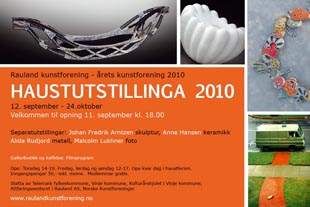 The Rauland Kunstforening Gallery
in Rauland, Norway is hosting an exhibition of Mr. Lubliner's
series of automobile portraits. This series began in 1970 after
seeing a Robert Frank photograph titled "Covered Car, Long Beach".
The series had it's first showing at the Mitzie Landau Gallery
in West Los Angeles in 1982 and then moved to Berlin were it
was hosted by Berlin's City Arts organization. View
the series >>
The Rauland Kunstforening Gallery
in Rauland, Norway is hosting an exhibition of Mr. Lubliner's
series of automobile portraits. This series began in 1970 after
seeing a Robert Frank photograph titled "Covered Car, Long Beach".
The series had it's first showing at the Mitzie Landau Gallery
in West Los Angeles in 1982 and then moved to Berlin were it
was hosted by Berlin's City Arts organization. View
the series >>
My
page on the Craig Krull Gallery site
The Slaughterhouse Space which
is a wonderful, ex-industrial exhibition space in Healdsburg.
CA. and part of the Lenz family's Duchamp Winery, will host a
major exhibition and auction commemorating Marcel Duchamp. The
show titled: SEDUCTION OF DUCHAMP - Bay Area Artists'
Response,
runs from October 3, 2009 - November 7, 2009
Mr. Lubliner created two works specifically for the exhibition;
a photo montage based on Duchamp's T um' called Duchamp, Pret-A-Porter
and a push-broom and Lucite sculpture called The Broom Ensnared
In His Pristine Haven. A parody of The Bride Stripped Bare by
Her Bachelors Even.
Also both the Wall Street Journal and the New York Times have
taken note of the current Duchamp revival with an article about
his permanent exhibition at the Philadelphia Museum:
http://www.slaughterhousespace.com/
http://online.wsj.com/article/
http://www.nytimes.com/2009/08/28/arts/design

This month, May 2009, The National Portrait
Gallery in Washington DC purchased a vintage print of one of
Mr. Lubliner's portraits of sculptor Richard Serra. The photograph
was taken in 1969 as part of Mr. Lubliner's coverage of the famed
Art & Technology Program created by the Los Angeles County
Museum of Art.
Malcolm Lubliner is one of sixty artists participating in a
major exhibition on the subject of banned books organized by
curator Hanna Regev. http://www.sfcb.org/html/2008banned.html
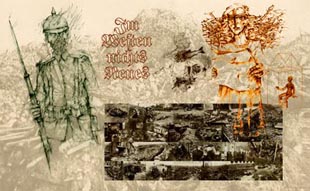
Phase one of the exhibition opened
on August 15th, 2008 in San Francisco at The Center for the
Book and Phase two, the one in which Mr Lubliner's work will
appear, opens on September 5th, 2008 at the African American
Museum and Library in Oakland. Mr. Lubliner's book selection
is All Quiet on the Western Front, the powerful anti-war novel
by Erich Remarque published in 1928 and banned by Hitler in
1933 calling it "anti-German and
anti-patriotic".
Mr. Lubliner's piece is a four by six foot image containing
interpretive drawing and reproductions of WW1 photographs of
dead and dismembered soldiers who suffered the agonies of trench
warfare.
This is the artist's statement about the
work:
“All Quiet on the Western Front”
The montage composed of photographs of dead and dismembered
soldiers is a pivotal part of the image. It is intended to give
viewers a taste of conditions on the front lines during World
War One. They came from a Brussels based archive, The Great War
in a Different Light, which contains hundreds of similar photographs
taken by photojournalists who had seemingly few editorial restrictions,
although some of these were also banned.
The Gothic German text is an abstracted version of the original
title taken from the book’s first edition dust jacket. Translated
the title reads, “In The West Nothing New”, which was apparently
Erich Remarque’s sardonic commentary on how little concern or
sympathy the military leadership had for the men in the trenches
where life was consistently and pervasively miserable.
The soldier in the drawing has volunteered for service under
great social pressure and against his instincts. He is a missionary
for his government’s interests although he will not profit from
them. He is both perpetrator and victim, ringmaster and clown.
He is neither alive nor dead and no longer has control over the
flames of his volition. A ghost of what might have been a rich
life; he is now a scrap of currency in an international gamble.
The woman in the drawing, wise and skeptical of military motives
is silenced by cultural tradition. Burdened by the absurdity
of war and the imperatives of home, her memories, real and invented,
mingle with dreams and demons. She reads the news of battles
and stares at the street now barren of young men except for those
who paid for their loyalty with severed limbs or broken minds,
although even that was often no excuse for absence from duty.
COOL SCHOOL - Los Angeles Premiere
In Los Angeles on June 27th, the American Arts Documentary Foundation
premiers its film, COOL SCHOOL.
New York City has long been regarded
as the heart of the American art movement, but near the end
of the 1940's, as the post-war rise of Abstract Expressionism
became the new wave of painting in the United States, a small
but determined band of painters, curators and collectors on
the West Coast were determined to make themselves known. Filmmaker
Morgan Neville examines the rise of the Los Angeles art scene
and how it brought a new and vigorously American slant to contemporary
painting in the documentary, "The
Cool School." Neville profiles Walter Hopps and Irving Blum,
owners of the Ferus Gallery, which championed the new school
of Los Angeles art; sculptors Ed Kienholz and Larry Bell and
painters Ed Ruscha, John Altoon and Billy Al Bengston, all of
whom were championed by the Ferus Gallery; architect Frank Gehry,
whose ideas dovetailed with those of the new L.A. artists; and
Dennis Hopper and Dean Stockwell, actors and Hollywood bohemians
whose love of the new L.A. art (and willingness to buy pieces)
provided crucial support for a struggling movement. Jeff Bridges
serves as narrator. ~ Mark Deming, All Movie Guide. The film also includes ten of Malcolm Lubliner's photographs
from his archive of the times and the artists who appear in the
film; Ed Ruscha, Wallace Berman, John Altoon, Ed Kienholz, Billy
Bengston, Ken Price and others. Lubliner was then the contract
photographer for Gemini G.E.L. and
for the Arts and Technology Program of the Los
Angeles County Museum of Art. He was also active in covering
much of the art and gallery scene then and was a prominent contributor
to the 1996 Craig Krull Gallery exhibition "Photographing
the LA Art Scene 1955 - 1975. Opening on September 27th and continuing
through November 14th, 2007, Sonja Marck and The
8 Gallery in San Francisco, who represents Mr Lubliner, will
exhibit more than thirty, mostly vintage photographs from that
historic period. |
 Me Two (see below) is in the collection of the Oakland Museum of Art. A statement from the artist reads: "These works are printed on a Kodak material called Translite, which is no longer manufactured. It's made of silver emulsion on acetate which I back with a sheet of chrome mylar. Under direct light the mylar reflects back through the acetate producing an unusual silver glow and because there is a thin space between the acetate and the reflecting surface, the images sometime dislocate making them appear three dimensional. I like science and technology and frequently search for new vehicles for the images but the optical qualities in these came about accidentally more as a result of my interest in translucency. Me Two (see below) is in the collection of the Oakland Museum of Art. A statement from the artist reads: "These works are printed on a Kodak material called Translite, which is no longer manufactured. It's made of silver emulsion on acetate which I back with a sheet of chrome mylar. Under direct light the mylar reflects back through the acetate producing an unusual silver glow and because there is a thin space between the acetate and the reflecting surface, the images sometime dislocate making them appear three dimensional. I like science and technology and frequently search for new vehicles for the images but the optical qualities in these came about accidentally more as a result of my interest in translucency.
"Conceptually, the work is about the human penchant for complex belief systems and the ramifications of that. To explore the point I create tableaus in which I arrange objects in ironic or "inappropriate" relationships and use uncommon, broken or altered objects as the players. The self portrait Me Two is not really me. Even if it were a traditional portrait it would still only be a symbolic illusion based on implication. I say that it's me and people agree to take my word for it but since that version of me is only a shadow amongst other shadows of equal weight and isn't me in the familiar form, what is it?"
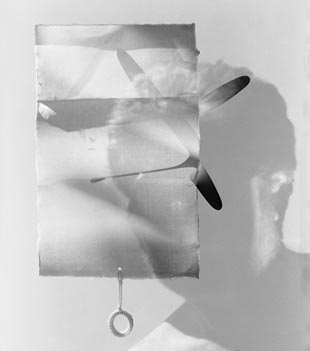
Also from the Syracuse Museum:
Dear Mr. Lubliner,
I
am writing to inform you that our Advisory Committee met last
week and approved your generous donation of "Me Two, 1998" for
inclusion in our our permanent collection. We will accession
the piece into our collection in the next few weeks and you will
be receiving paperwork from our offices documenting this process.
We will also be sending you a deed of gift and acknowledgement
letter for tax purposes. Unfortunately, as both creator and
donor of the artwork, IRS regulations dictate that you can only
receive a deduction equal to the value of your time and materials
to create the art.
I do want to thank you again for your interest in our collection
and best wishes for your future endeavors.
Sincerely,
Domenic J. Iacono
Director, Syracuse University Art Galleries
Shaffer Art Building
Syracuse University, New York 13244
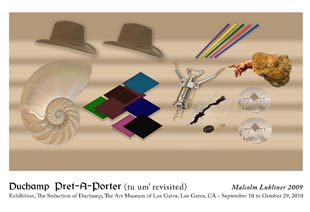
The
Seduction of Duchamp at The Los
Gatos Museum
The Seduction of Duchamp, the traveling exhibition that began
its tour at the Duchamp Winery's Slaughterhouse Space in Healdsburgh,
CA October 2009 will open at The Art Museum of Los Gatos on September
10, 2010 and run through October 29, 2010.
In commemoration of the event, The Museum has received on loan,
two original Marcel Duchamp drawings from The Collection of Harry
W. and Mary Margaret Anderson. They are also providing the funds
to underwrite a Catalog for the exhibition.
Also, in commemoration, Mr. Lubliner has produced two posters
that will be available at the Art Museums gift store.
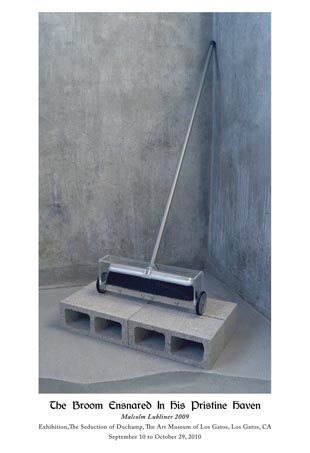
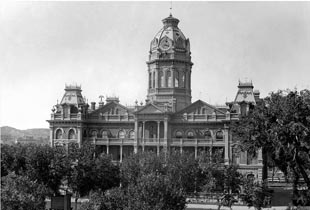
Bancroft Library Acquires Historic Thresher Collection October
2007, The renowned Bancroft Library on The UC Berkeley campus,
acquired Malcolm Lubliner's entire collection of original, 5
x 7 film positives of historic Mexico, circa 1900. The photographs
are the work of the Los Angeles based photographer G.P. Thresher
and had been in Mr. Lubliner's possession since 1965. Thresher
was a passionate and talented amateur, who was known for his
images of California missions and his travels throughout the
American southwest, did some of his best work in Mexico in the
years leading up the revolution. Included in the collection were
original photographs of the Thresher family in their Los Angeles
home and a residency document in Thresher's own hand.
View the portfolio >>
Acquisitions
August 11, 2006 — The Bedford Gallery on behalf
of the City of Walnut Creek has acquired six large prints from
photographer Malcolm Lubliner. The images are from the series "Significant
Places" and were presented as a gift to the city. Mr. Lubliner
has an extensive national and international exhibition history
and the Bedford and the city were pleased to receive the works.
Transmissions Gallery, the new Berkeley exhibition space established
in a former transmission repair building, is exhibiting several
of Malcolm Lubliner's automobile photographs dating from the
1970's. The work was included, along with the work of several
other local artists in their inaugural exhibition in February
of 2006.
The Azzurra
Project in Marina Del Rey, CA. purchased two photographs
from Malcolm Lubliner's archive of historically important artists,
one of Sam Francis and one of John Altoon as part of their collection
and celebration of the major contribution those California based
artists made in the 1960s and 70s. The large, thirty by forty
inch prints are installed along with the artist's work on the
6th and 8th floors of the condo complex.
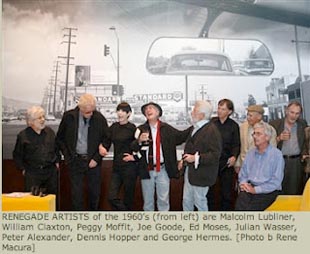
Rush Creek Editions
Press, the Santa Fe based fine arts printer
and gallery has added Malcolm Lubliner to its roster of artists
and will be showing and representing his work starting June 2006.
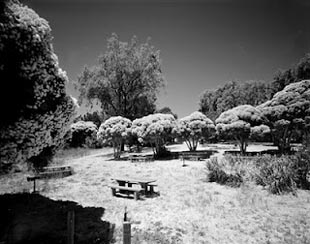
December 2008, The Crocker Art Museum in Sacramento, California
has agreed to acquire a print of Mr. Lubliner's photograph "Benicia Park
2001". The majority of Mr. Lubliner's urban landscape images are large,
archival pigment prints approximately, 22 x 28 inches. View
the portfolio >>
|
Treasures from the Vault:
Malcolm Lubliner’s Photographs of the L.A. Art Scene
B. Karenina Karyadi, May 4, 2015 - See Full Review >>
San Jose Mercury News
Richmond photographer's bold images find
a home at The Getty
By Lou Fancher - November 18, 2013
RICHMOND -- Photographer Malcolm Lubliner is not as he appears.
Like the soulful shadows and slashing diagonals lurking in the bold black
and white or blazing colors of his images, the 80-year-old photographer's
friendly, mild manner only hints at the underlying political and cultural
firebrand.
The Richmond resident, who moved from his "beautiful double-yard, Mediterranean-style
Oakland home" after giving up early idyllic visions of urban farming, has
been chronicling California culture for decades. An avid fan of celebrated
graffiti artist Banksy and public mural masters in Oakland, he has more in
common with today's taggers than yesterday's Rotarians.
Recently, the Getty Research Institute purchased Lubliner's entire collection
of late 1960s and 1970s images.
"Malcolm Lubliner's photographic archive is an excellent complement to significant
archival holdings already in the Special Collections," says Marcia Reed,
Getty Research Institute chief curator.
"It took 15 years, but they now have it all," Lubliner says. "For me, it's
a resolution of that time."
In the '60s and '70s, after arguing policy and cartooning during a four-year
stint with the U.S. Navy, Lubliner was hired by Kenneth Tyler as the contract
photographer for Tyler's Los Angeles-based Gemini G.E.L., a premier publisher
of limited edition prints.
L.A.'s lavish scene was in a seminal period, with West and East Coast legends
like Ron Irwin, Jasper Johns, Claes Oldenburg, Roy Lichtenstein and Robert
Rauschenberg shaking up the conventional art world. Gathered like stars at
Hollywood parties -- or their subversive humor captured in rare, private
studio portraits -- Tyler says, in an email, "Malcolm's wealth of images
capture the zeitgeist of an exciting era in their uncanny precision and inclusiveness."
Lubliner remembers gambling -- putting aside his paint brush, purchasing
a 35mm camera and a storefront and pitching a pictorial story profiling the
making of a fine art print.
"I just migrated into documenting the birthing of what came to be called
the L.A. art renaissance," he says. "As a kid, I knew the city as a vast
wasteland. Suddenly, it was developing culture, with parties for people like
David Hockney, Jasper Johns, choreographer Merce Cunningham."
Craig Krull Gallery in Santa Monica has represented Lubliner for decades
and Krull says Lubliner's photos "capture the raw and exuberant energy" of
the period.
Lubliner's body of work shows he never restricted himself to snapping only
the glitterati.
"Auto Culture," an arresting collection featuring vehicles of all ages and
conditions in urban and natural settings, makes plain the characteristic
poignant-funny duality of his approach. Cars are aliens, clowns, masters,
mistresses -- and more than anything, so are their owners, the photos suggest.
"The Anxious Landscape" photos, in which his use of shadow in pathos-saturated
black and white images rises to the level of dramatic genius, leave the viewer
pondering humans' relationship to place. In the 1980s Lubliner began creating
still lifes made with fragile, vulnerable things.
"I used torn papers, broken objects never conceived of as sentimental or
decorative," says Lubliner, who likes his Nikon D700's broader capabilities.
Shot against Translite, a Kodak material he backed with chrome Mylar, the
objects appeared 3-D.
But the works' visual novelty is far less important than their message.
A 2009 commission for Oakland's African American Museum stands out: a 6-foot
montage of unedited photos from a WWI magazine and handwritten inscriptions
are a massive cry against war proponents' investment in money, not humanity.
"I carry my pacifist protest views right out in front, very conscious," he
insists. "But my landscapes and cars show my affection for humor. I used
to deliver photos for a drugstore and keep the discards. Rejected photos
showed astonishing images. They were of things people valued but didn't recognize
as ironic. My lunacy picked up the humor."
He hasn't given up the idea that art should dispense socio-political lessons,
lit with humor and expressed to expose succinct, focused juxtapositions.
"Art moves; it doesn't rest," he says. "Early tagging is no good to anyone,
but Banksy and contemporary art influenced by hip-hop culture and graffiti
styles are critically important. They are as direct as anything I know of
in art history."
In addition to the Getty, Lubliner's images can be seen locally at the
Oakland Museum of California, the Bancroft Library at UC Berkeley and Saint
Mary's College Museum of Art ("The Automotive Landscape"). His work is
also at the Los Angeles County Museum of Art, Crocker Art Museum in Sacramento,
Australia' National Gallery of Art Kenneth Tyler Collection, the National
Portrait Gallery and the Smithsonian Institution.
November
2012, The J.Paul Getty Research Institute has purchased Malcolm
Lubliner's photographic archive. The archive covered much of
the developing art world in Los Angeles between 1967 and 70.
In that period Lubliner was also the contract photographer for
Gemini GEL and The Los Angeles County Museum of Art's, Art and
Technology Program. The archive consisted of several hundred
prints and thousands of negatives. Reproduction rights and research
and study access will eventually be available through Getty Images
and The Research Institute.
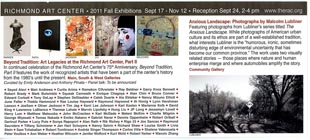
September 2012 Show at the Richmond Art Center
THE GARDEN OF ARBITRARY VOLITION
January 2010 Show at the Togonon Gallery
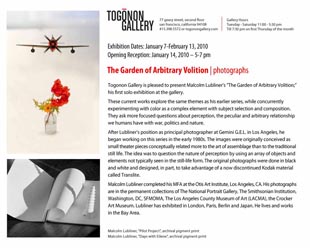
SF Chronicle/96 Hours review by Nirmala Nataraj: http://www.sfgate.com/cgi-bin/article.cgi?f=/c/a/2010/01/21/NS2J1BJUM3.DTL
LaFayette Library purchases Seaborg Portrait
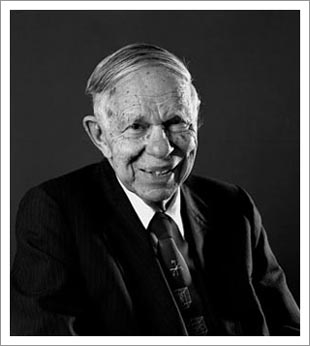
September 30th 2009. The Lafayette Library and Learning Center
in Lafayette, California has just agreed to purchase Mr. Lubliner's
1986 portrait of Nobel Prize winner Glenn Seaborg.
The Lafayette Library and Learning Center represents a community-driven
effort to build a regional resource and national model for the
library of the future. Hailed as a “national model” for libraries,
the Lafayette Library and Learning Center will also be home to
the Glenn Seaborg Learning Consortium, an innovative partnership
of the region’s leading arts, culture, and educational institutions.
Informative Links:
http://nobelprize.org/nobel_prizes/chemistry/
http://en.wikipedia.org/wiki/Glenn_T._Seaborg
Bancroft Library Acquires Eight Malcolm Lubliner Photographs
The University of California at Berkeley's Bancroft Library that
houses one of the largest collections of historic photographs
in the world, last month acquired eight large photographic prints
of the collapse of the Embarcadero Freeway in San Francisco.
The event that was triggered by the 1989 Loma Prieta earthquake
altered the city's traffic patterns.
|














